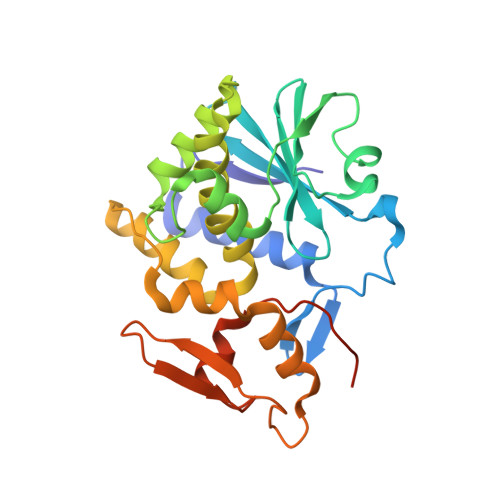Structure-Function Analysis and Insights into the Reduced Toxicity of Abrus precatorius Agglutinin I in Relation to Abrin.
Bagaria, A., Surendranath, K., Ramagopal, U.A., Ramakumar, S., Karande, A.A.(2006) J Biol Chem 281: 34465-34474
- PubMed: 16772301
- DOI: https://doi.org/10.1074/jbc.M601777200
- Primary Citation of Related Structures:
2Q3N - PubMed Abstract:
Abrin and agglutinin-I from the seeds of Abrus precatorius are type II ribosome-inactivating proteins that inhibit protein synthesis in eukaryotic cells. The two toxins share a high degree of sequence similarity; however, agglutinin-I is weaker in its activity. We compared the kinetics of protein synthesis inhibition by abrin and agglutinin-I in two different cell lines and found that approximately 200-2000-fold higher concentration of agglutinin-I is needed for the same degree of inhibition. Like abrin, agglutinin-I also induced apoptosis in the cells by triggering the intrinsic mitochondrial pathway, although at higher concentrations as compared with abrin. The reason for the decreased toxicity of agglutinin-I became apparent on the analysis of the crystal structure of agglutinin-I obtained by us in comparison with that of the reported structure of abrin. The overall protein folding of agglutinin-I is similar to that of abrin-a with a single disulfide bond holding the toxic A subunit and the lectin-like B-subunit together, constituting a heterodimer. However, there are significant differences in the secondary structural elements, mostly in the A chain. The substitution of Asn-200 in abrin-a with Pro-199 in agglutinin-I seems to be a major cause for the decreased toxicity of agglutinin-I. This perhaps is not a consequence of any kink formation by a proline residue in the helical segment, as reported by others earlier, but due to fewer interactions that proline can possibly have with the bound substrate.
Organizational Affiliation:
Department of Biochemistry, Indian Institute of Science, Bangalore 560012, India.
















